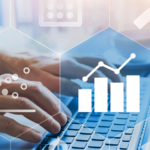Information Governance: Alignment with Business is Essential

An optimal IG program is one that aligns with the business processes and strikes the right balance in addressing the value side and the risk side of information.
Achieving an ideal alignment between IG and the business is a steep challenge. Commonly, the business stakeholders and end users are more concerned with the immediate availability of information so that work can get done. Few business users are mindful of information risk and compliance requirements.
This mindset can lead to friction between IG policies and processes, and business users focused on productivity goals. The specific pain points represent specific gaps in the IG-business relationship. IG professionals must address those gaps in a way that aligns with the organization’s business objectives.
Friction in this context is usually the product of user frustration. When employees cannot easily access or share information, they are prone to devising workarounds that increase the exposure to risk. They might take documents from secure servers and send them via e-mail, unencrypted, or they might scan and print files and stash the paper versions in multiple spots or even leave them in full public view. Increasingly, employees are uploading workplace information to their personal devices in an effort to improve speed and access.
Business users frequently prioritize short-term efficiency over the long-term view of information governance. Successful IG practitioners must consider all the stages of the information lifecycle as it seeks solutions that reduce the pain points.
There is no cure-all system or methodology that fixes misalignment. The answers lie in the proper integration of the technology ecosystem. The architects of alignment must have a deep understanding of the technology ecosystem and an equally deep understanding of the organization’s business objectives. IG professionals must choose systems, applications, and platforms that serve not only IG’s purposes but that advance the business objectives.
The typical medium-sized or large organization will have a diverse technology ecosystem, with solutions numbering in the dozens or more. Few of these information systems were actually designed with IG and the information lifecycle in mind. Achieving peak integration is therefore a tall, tall order.
A knee-jerk reaction is to reduce the number of tools. Indeed, having fewer systems to manage and maintain should save money in the short term, but stripping functionalities does not address the IG-business pain points and might instead add to them. New gaps and inefficiencies would likely neutralize any initial cost savings.
An effective approach for most organizations is to leverage their technology ecosystems rather than gut them. IG must be open to adding solutions when doing so makes sense. The alternative is to continue forcing a business process into an existing technology and continue hoping for the best.
What features might you look for as you add systems, applications, and platforms?
• Make sure your choices integrate with your ecosystem. A best-in-breed application brings no value if it doesn’t integrate and doesn’t address your specific gaps.
• Seek tools that offer full lifecycle management. Some of them will fail to address e-discovery, or retention, or disposition.
• Place a value on those solutions that have role-based or group-based access-control functionality, which ensures only the right eyes see the right information at the appropriate times.
• Seek easy sharing and collaboration capabilities. Today’s users insist on immediate and burden-free access to the files they need.
• Seek maximum automation, which tends to foster efficiency, improve classification and search, and reduce the human intersection with information – thus reducing the frequency of human error.
A buzz-phrase often heard in information circles is this: “Information is an organization’s most valuable asset.” IG is the appointed steward of that information and must seek to address the value side of the coin as much as it does the risk side. Finding the solutions that address your own specific gaps and that align with the business is not a luxury: it is a requirement.
To learn more about this topic, download “Information Governance: Alignment with Business is Essential,” a free white paper developed by ARMA International in conjunction with Access, or view the webinar by the same name.
About the Author
 Information Governance2022.07.18The IGP Exam: New and Improved
Information Governance2022.07.18The IGP Exam: New and Improved Analytics2021.02.01What’s Next in Information Governance? Continuous Audit and Analytics
Analytics2021.02.01What’s Next in Information Governance? Continuous Audit and Analytics Information Governance2020.11.19Information Governance: Alignment with Business is Essential
Information Governance2020.11.19Information Governance: Alignment with Business is Essential Information2020.09.11New Podcast Series Focuses on the Careers of Women Leaders in Information Governance
Information2020.09.11New Podcast Series Focuses on the Careers of Women Leaders in Information Governance